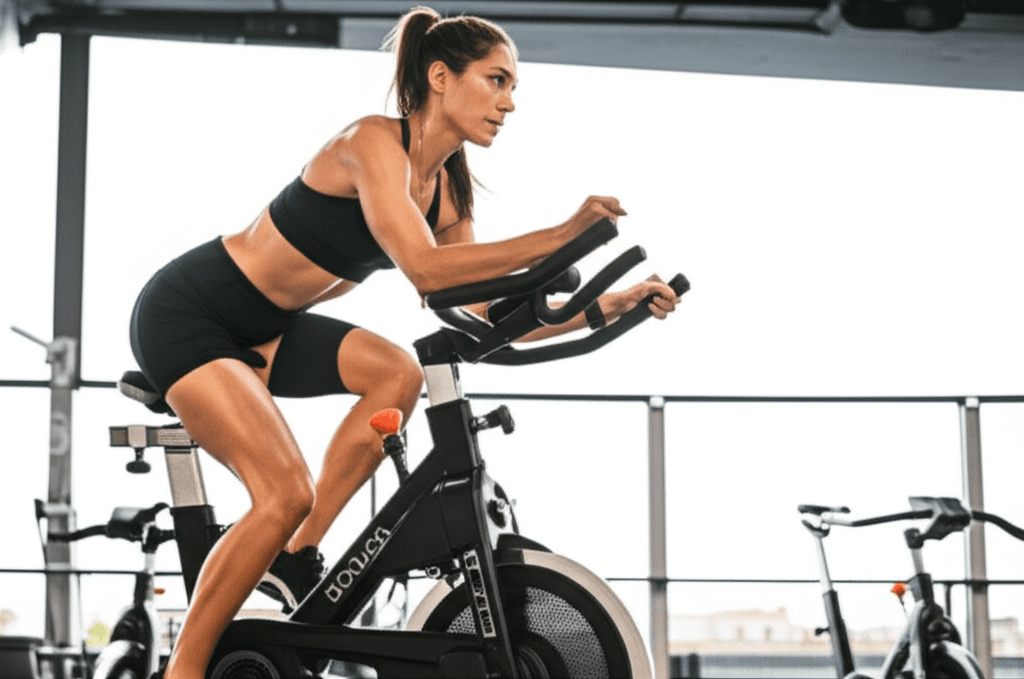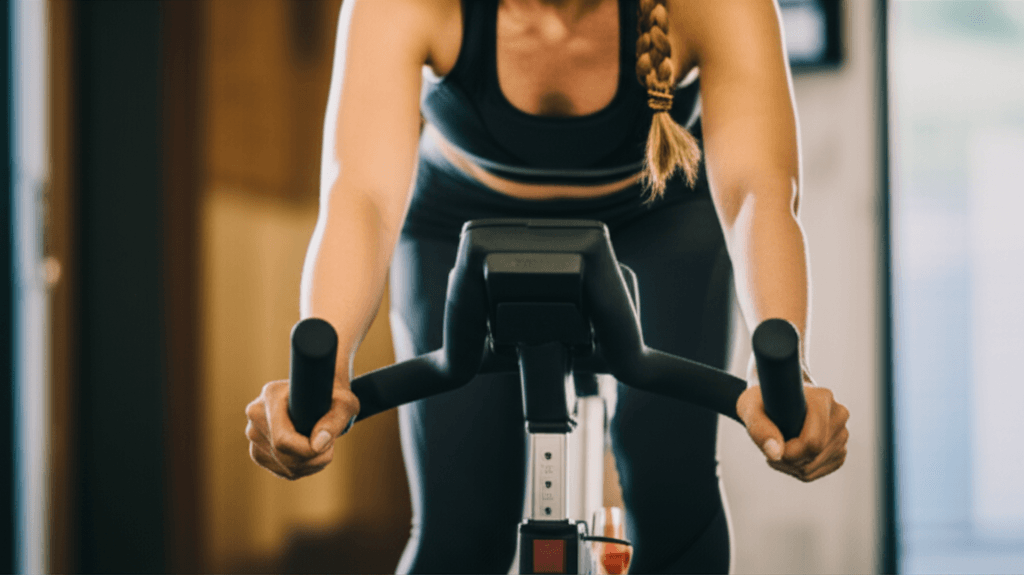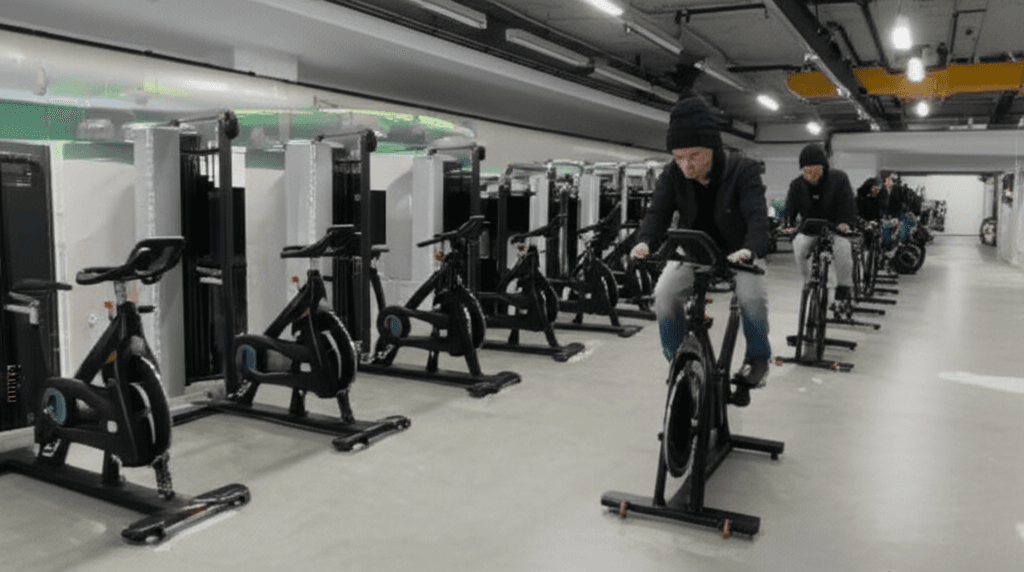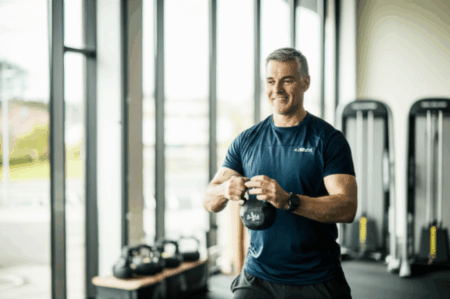For many women, the journey through menopause brings unwelcome changes, including a decline in muscle mass and strength, a process known as sarcopenia. As estrogen levels drop, maintaining and building muscle becomes increasingly challenging, yet critically important for overall health, metabolic function, and long-term independence. While traditional strength training is a cornerstone of any fitness regimen during this phase, integrating bike sprints – a form of high-intensity interval training (HIIT) – offers unique and powerful benefits for preserving and even increasing muscle, particularly the fast-twitch fibers often lost with age.

The Menopause-Muscle Connection: Why It Matters
Menopause, marked by drastic hormonal shifts and declining estrogen, is a “vulnerable period for the loss of muscle mass.” This reduction in estrogen directly impacts muscle health, regeneration, and function, accelerating age-related muscle loss. Studies show that women in late perimenopause can have significantly less muscle mass in their limbs compared to those in early perimenopause, and postmenopausal women are more prone to sarcopenia.
Maintaining muscle mass during and after menopause is vital for several reasons:
- Combating Sarcopenia: Preventing or slowing muscle loss helps preserve strength, mobility, and agility, crucial for staying active and independent as you age.
- Bone Density: Muscle mass plays a critical role in protecting bone density, which is also threatened by falling estrogen levels during menopause, increasing the risk of osteoporosis and fractures.
- Metabolic Health: Muscle tissue is metabolically active and helps regulate blood sugar. Preserving lean muscle mass supports a healthier metabolism and can help manage changes in body fat distribution, particularly the increase in abdominal fat common during menopause, and reduce the risk of type 2 diabetes.
- Overall Well-being: Adequate muscle mass contributes to better balance and coordination, lowering the risk of falls and injuries. It also positively impacts energy levels and mental well-being.

The Power of Bike Sprints for Menopausal Muscle
Bike sprints, a form of sprint interval training (SIT), involve short, maximal-effort bursts of activity followed by recovery periods. This type of training has been consistently shown to offer significant benefits for women in perimenopause and menopause, particularly for muscle building and fat loss.
Here’s why bike sprints are particularly effective:
Activating Fast-Twitch Muscle Fibers
Unlike moderate-intensity cardio, sprinting specifically activates and strengthens Type 2, or fast-twitch, muscle fibers. These fibers are responsible for producing quick bursts of power and speed and tend to decline in size and number with age and inactivity. Stimulating these fibers through sprints helps preserve muscle mass, strength, and agility.
Hormonal Response and Muscle Synthesis
High-intensity interval training (HIIT), including sprints, can trigger the release of human growth hormone (HGH) and may increase testosterone, both of which are beneficial for muscle repair and growth, helping menopausal women regain muscle mass. This intense effort signals to the body a need for more muscle, promoting protein synthesis.
Time Efficiency and Body Composition
Research highlights the time-efficient nature of bike sprints. A study found that postmenopausal women who completed 20-minute interval sessions on a bike three times a week for eight weeks gained significant lean muscle mass in their legs and trunk and lost body fat, with only eight hours of total exercise. The muscle gain was comparable to that seen in strength training programs, but potentially quicker for the trunk and legs. Sprint interval training can also help reduce visceral fat (deep belly fat) which often accumulates during menopause.
Improved Metabolic Health
SIT can enhance cardiovascular fitness, improve insulin sensitivity, and strengthen mitochondrial function, all crucial for metabolic health during menopause.

The Routine That Works: Sprint Interval Training on a Bike
Incorporating bike sprints into your routine doesn’t require hours of dedication. Just 1-2 sessions per week, when combined with regular strength training, can yield significant results.
A typical bike sprint session should include:
1. Warm-Up (5-10 minutes)
Start with light cycling at an easy pace to gradually elevate your heart rate and prepare your muscles and joints. This is crucial for preventing injury during the intense sprints.
2. Sprint Intervals (10-20 minutes of work/rest cycles)
The core of your workout involves alternating between maximal effort sprints and recovery periods. Here are a couple of effective protocols:
Option 1 (Beginner-Friendly):
- Sprint: 8 seconds of all-out, maximal effort pedaling.
- Recover: 12 seconds of very light, low-intensity pedaling.
- Repeat: Continue this cycle for 15-20 minutes.
Option 2 (Dr. Stacy Sims Inspired):
- Sprint: 20-30 seconds of maximal effort.
- Recover: 1-4 minutes of easy pedaling.
- Repeat: Perform 3-6 rounds of this cycle.
The key is “maximal, 100%, ovaries to the wall, all-out effort” during the sprint portion, where you “are leaving it all on the bike.”
3. Cool-Down (5-10 minutes)
Finish with light, easy cycling and gentle stretching to help your heart rate return to normal and aid muscle recovery.
Frequency and Progression
Aim for 1-2 sprint interval training sessions per week. As you get fitter, you can gradually increase the duration of the sprints, decrease the recovery time, or add more rounds. However, avoid overtraining; more than three SIT sessions per week or combining it with insufficient sleep or high stress can be counterproductive due to increased cortisol.

Safety Considerations and Tips
- Consult Your Doctor: Always check with a healthcare provider before starting any new high-intensity training, especially if you have underlying health conditions or haven’t exercised at high intensities before.
- Listen to Your Body: While pushing hard is essential for SIT’s effectiveness, adequate rest and recovery are equally crucial to avoid overtraining.
- Proper Form: Focus on maintaining good form throughout your sprints to prevent injury. If unsure, consider consulting a fitness professional.
- Combine with Strength Training: While bike sprints are excellent for muscle, they are best paired with a comprehensive strength training program (at least twice a week) for a holistic approach to muscle and bone health during menopause.
- Nutrition: Ensure adequate protein intake to support muscle repair and growth.
By embracing the strategic intensity of bike sprints, menopausal women can effectively combat muscle loss, improve metabolic health, and build a stronger, more resilient body for years to come.







